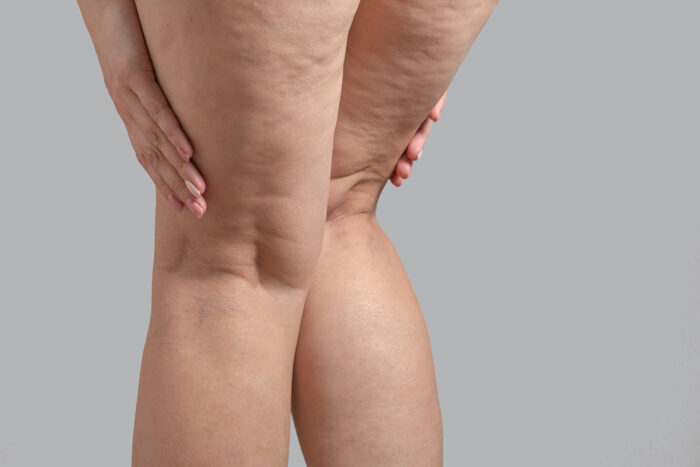Any veins that do not cause the symptoms of varicose veins and/or are smaller than 3 millimeters are usually considered spider veins. Although spider veins are unattractive, they are not dangerous. They can be tiny red thread-like veins called Telangiectasias, or darker blue flat veins called Blue Reticular Veins. It is these darker blue veins that feed into the smaller spider veins and when treating spider veins it is important to also treat the Reticular Veins, which feed into them (feeder veins).
Spider veins are never covered by health insurance. In the past, a physician could document that the patient reported pain from her spider veins and it would be paid for by insurance, but those days are long gone.
So, how to treat the spider veins? There are two different methods: Sclerotherapy and 1064 NdYag Laser Treatment. Most of the time sclerotherapy is used because it is faster, less uncomfortable, and more economical.
What is sclerotherapy? This is the injection of a medication (called a sclerosant) into the vein with very tiny needles. The medication causes irritation of the vein wall so that it seals shut, can’t carry blood, and therefore can’t be seen anymore. The body then absorbs the vein over time.
Sclerotherapy has been around for a long time, but what has changed are the medications that are used and the methods used for injection. The current medications are Asclera® (polidocanol), Sotradecol (Sodium Tetradecyl), and glycerin. The first two are approved by the FDA and have been used for many years. They have replaced the use of concentrated salt-water injections (saline), and they can be used for varicose vein injections as well as for spider veins. Glycerin is not FDA-approved, but it is used very safely and effectively for the tiniest of spider veins.
The newest method of treatment for the darker blue spider veins is to mix the sclerosant with a small amount of air, which turns it into a foam. This makes the injection much more effective and reduces the number of treatments needed. There are also new light systems that allow the feeder veins to be seen more clearly so treat them more effectively.
Following sclerotherapy, your veins will look inflamed, like cat scratches, which subside over a few days. The veins will then turn darkish and fade over time. Your legs may be slightly tender and itchy to the touch, and there may be some bruising at first also. This is temporary. Two weeks after a sclerotherapy session, you will return to the office so we can look for so-called “trapped blood.” This is old dead blood that got trapped in a sealed vein. It may appear as a dark tender lump. This is NOT a blood clot. If we find it, then the nurses release the trapped blood, allowing your legs to look better faster. Sclerotherapy sessions are repeated every six weeks until we reach your goal.
The number of treatments needed to improve your veins depends on the severity of your spider veins and the degree of improvement you want. It will take more sessions to allow you to wear thong bikinis than it will take for you to wear skirts or dresses again. We can’t make your legs look 21 years old again, but they can be improved by 75% to 85%. I tell women that if they can’t commit to at least two treatment sessions, then they shouldn’t do it. It takes at least that many for a significant improvement.
Like any maintenance process, you will most likely need touch-ups of the spider veins in the future. I tell my patients to think of me as their dentist. You don’t stop going to the dentist because you’ve developed a plaque or a cavity. You see your dentist periodically to keep your teeth healthy and beautiful. I do the same. Most women return in a few years for a session or two to take care of any new spider veins that have appeared.
The 1064 Nd Yag Laser is the laser used for spider veins. The laser light is focused directly on the vein through the skin, sealing it shut so it can’t carry blood and you don’t see it. The laser is used mostly for the tiniest of veins, veins that don’t respond to sclerotherapy, on patients who are highly allergic to any medications, or on those who are needle-phobic. The reason it is not used more is that it is slower than sclerotherapy (and therefore more expensive), and more uncomfortable. It is also very difficult to use on tanned or darker skin.
*Individual Results May Vary




